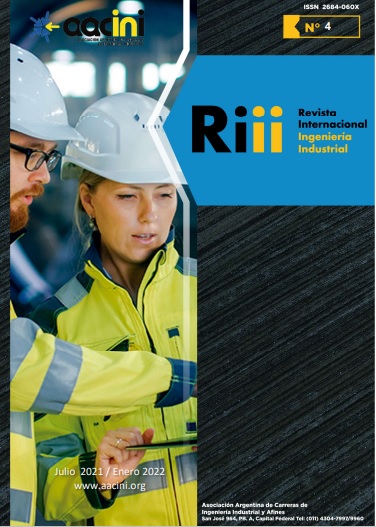Uso de Nanopartículas de Plata para el Desarrollo de Textiles Funcionales
Resumen
En este trabajo de investigación se presentan los resultados de la preparación de nanotextiles funcionales de algodón conteniendo nanopartículas de plata (NPs Ag) con diferentes tamaños. La incorporación de las nanopartículas se realizó usando la síntesis de reducción química in-situ; dentro de los resultados se desarrolló la propiedad superhidrofóbica en tela de algodón en función de diferentes tamaños de nanopartículas y con la modificación superficial con hexadeciltrimethoxisilano (HDTMS). Utilizando tres agentes químicos reductores como: ácido ascórbico, borohidruro de sodio y al citrato de sodio; fue posible la variación del tamaño nanométrico de las partículas de plata sobre la tela de algodón. La formación y propiedades del nanotextil fueron verificadas utilizando diferentes técnicas de caracterización: espectroscopia UV-Vis y difracción de rayos-X. La propiedad superhidrofóbica fue verificada utilizando medidas del ángulo de contacto con el software ImageJ.
Descargas
Citas
[2] Coyle, S., Wu, Y., Lau, K., De Rossi, D., Wallace, G. & Diamond, D. (2007). Smart Nanotextiles: A Review of Materials and Applications. MRS Bulletin, 32(5), 4434-4442.
[3] Khalil-Abad MS, Yazdanshenas ME (2010) Superhydrophobic antibacterial cotton textiles. J Colloid Interface Sci 351(1): 293- 298.
[4] El-Rafie, M.H., Shaheeen, T. I., Mohamed, A. A., y Hebeish, A. (2012). Bio-synthesis and applications of silver nanoparticles onto cotton fabrics. Carbohydr Polym, 90(2), 915-920. doi:10.1016/j. carbpol.2012.06.020.
[5] Daniel A. Cruz., Miriam C. Rodríguez., Juan M. López., Virginia M. Herrera., Alejandro G. Orive., Alberto H. Creus., (2012). Nanopartículas metálicas y plasmones de superficie: una relación profunda. Av. cien. ing.: 3(2), 67-78.
[6] Hua Bai, Lei Zhang, Dan Gu, Micrometer-sized spherulites as building blocks for lotus leaf-like superhydrophobic coatings, Applied Surface science, 10.1016/j.apsusc.2018.07.183, 459, (54-62), (2018).
[7] Song, J., & Rojas, O. J. (2013). Approaching super-hydrophobicity from cellulosic materials: a review. Nord. Pulp Pap. Res. J, 28(2), 216-238.
[8] Lihui Xu, Wei Zhuang, Bi Xu, Zaisheng Cai, Fabrication of superhydrophobic cotton fabrics by silica hydrosol and hydrophobization, Applied Surface Science, Volume 257, Issue 13, 2011, Pages 5491-5498, ISSN 0169-4332, https://doi.org/10.1016/j.apsusc.2010.12.116.
[9] Fernández Cañete Agustín. Estudio de la Hidrofobicidad y Autolimpieza en Materiales con Nanotratamientos Superficiales. Universidad Autónoma de Barcelona. 2013, 6-18 p


































































